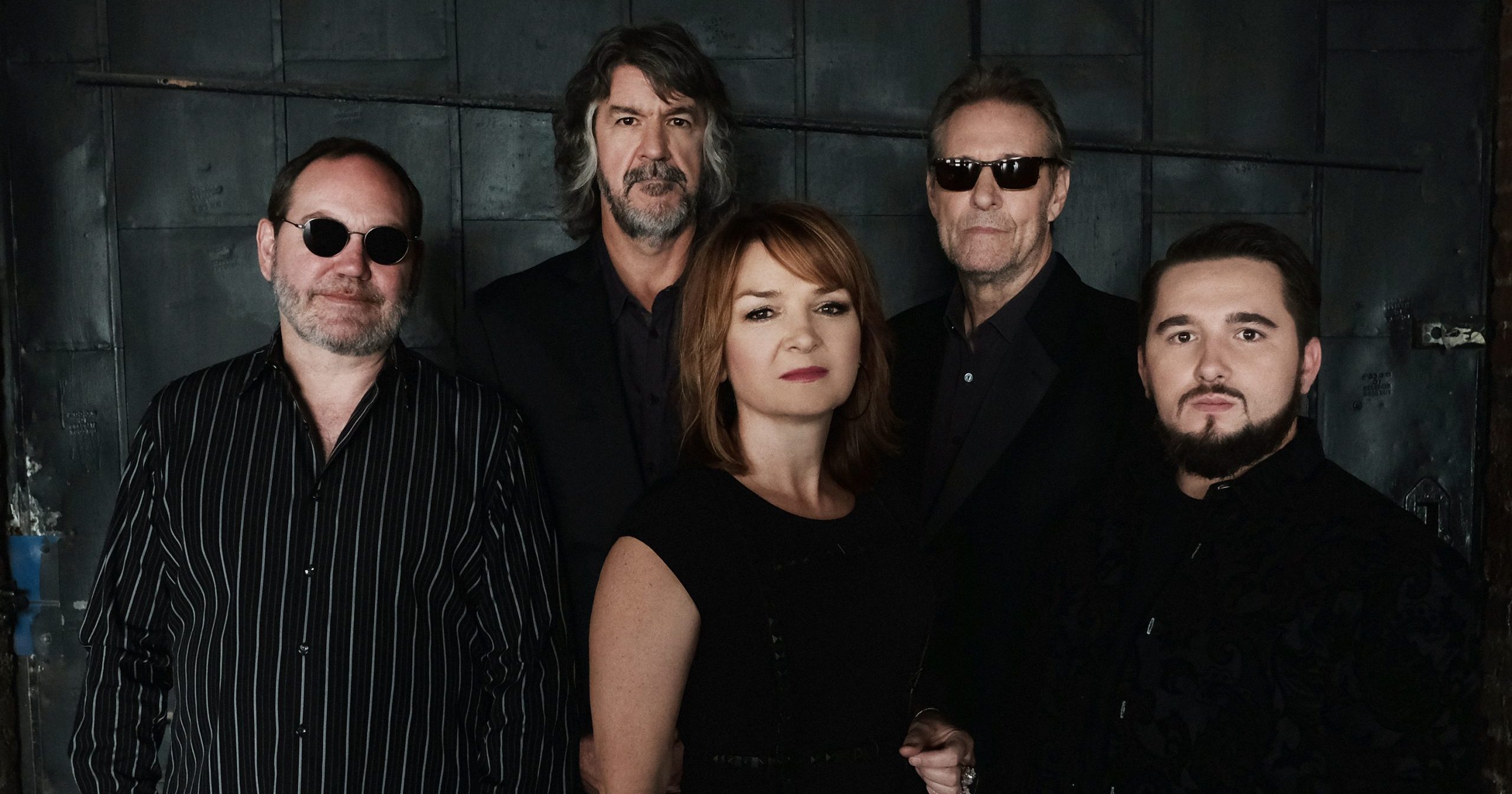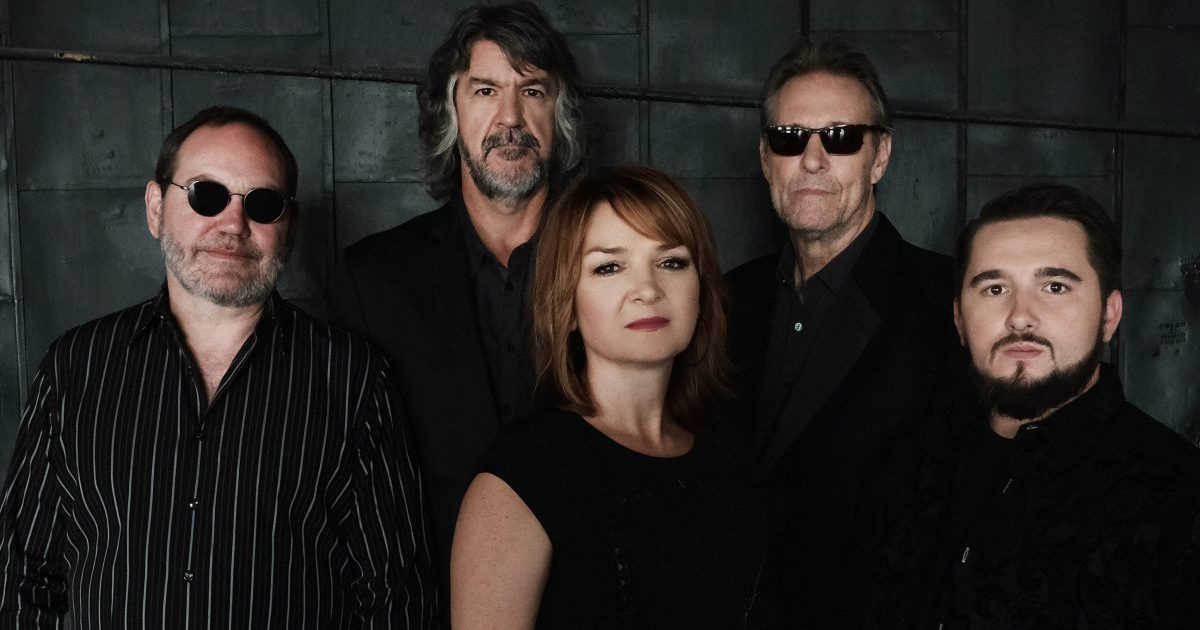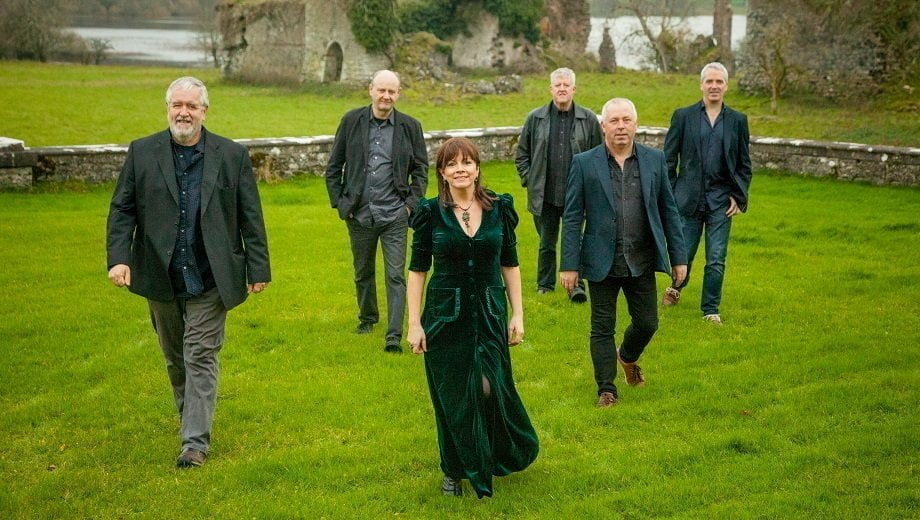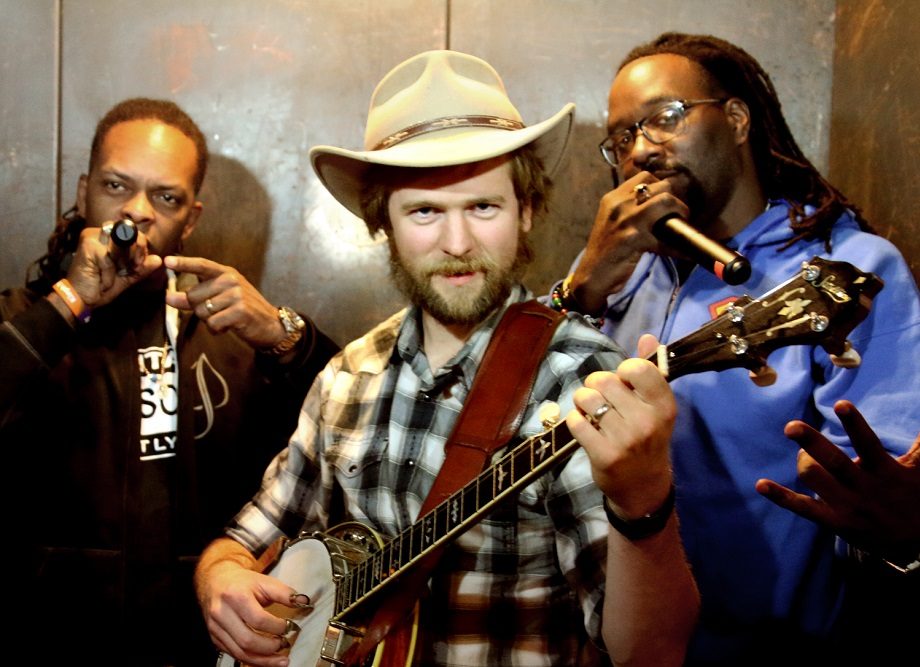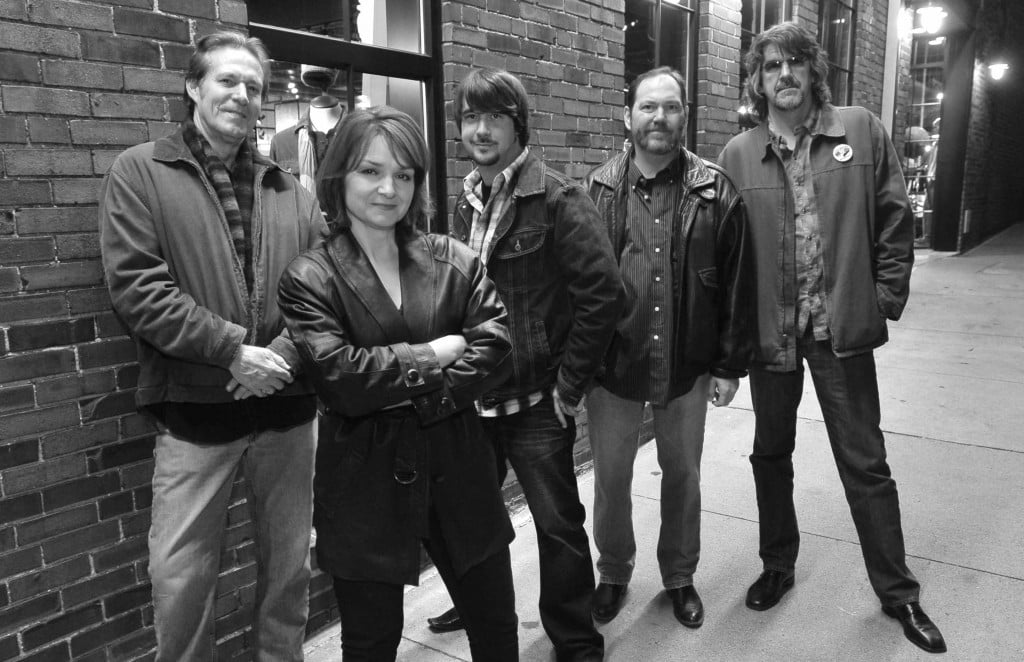Rounder recording artists THE STEELDRIVERS are back this month with a brand new record, Hammer Down (one that’s already been hailed for it’s ‘masterful playing’ by everyone from GAC to NPR…), and with it, a new lineup and invigorated sound. CHRIS MATEER got the scoop from our latest ARTIST OF THE MONTH…
[GIVEAWAY: The first five readers to email The Sitch will receive an exclusive copy of Hammer Down courtesy of Rounder Records!]
A lot has happened to the SteelDrivers since the 2010 release of Reckless, specifically the departure of Chris Stapleton and the addition of Gary Nichols, as well as the departure of Mike Henderson and arrival of Brent Truitt.
Tammy Rogers: Yes, a lot has happened since 2010, but we are just happy to be able to continue to play the kind of music we all love! We have been able to go out and tour, take the music to our fans and win them over with the new line-up. Now that the new cd is out, it feels like the final piece is in place.
Can you talk about Chris Stapleton’s departure? How and when did that happen and what was the plan for the SteelDrivers to move forward?
Tammy: Chris left the band at the end of 2009. He did a show or two at the beginning of 2010 as we were transitioning to Gary. Initially, I didn’t think we should try to find a voice that was similar to Chris’. The whole premise of the band had always been to allow everyone to be unique and individual, so it seemed contradictory to our original intent to try to find a ‘copy’ if you will, of Chris’s sound.
When Janet Henderson stumbled across Gary’s website and heard his voice, it was remarkable! Gary just naturally has a gravelly, soulful kind of voice, so it was an amazing thing to have him show up and start singing with us! The transition was so much smoother than I ever thought possible. I really thought for a while that we should go in an entirely different direction. Fortunately for us, we didn’t have to.
How and when did you connect with Gary and Brent? What was it about Gary and Brent that made you realize these two were the perfect fits for joining the SteelDrivers?
Tammy: Gary joined the band two years before Brent came on board, so he had really established himself in the band by the time Mike Henderson left. The addition of Brent was easy in that he had actually gone out and subbed with the band in 2009. So, he knew a lot of the material already.
Both of these guys had played a lot of different kinds of music and had an ear for things outside the traditional bluegrass world so I think that made them the perfect fit for the band as much as anything. It didn’t hurt that Brent and Richard had spent about 10-15 years together in a band called the Cluster Pluckers!
Gary and Brent — Can you each describe your previous musical experiences before joining the SteelDrivers?
Brent Truitt: Mine goes back to age 12 when I first started playing. Both my parents played old time country music and sang duets. My grandad was an old time fiddler. Dad played guitar and Mom played piano in our tiny country church. She also taught me how to sing harmony at a very young age. I think I was around 6 or 7 years old?
From there I went on to play in regional Midwest bands and pretty much toured in the summer months and on weekends from age 13. Jump forward several years to 1984 when I moved to Nashville. Since then I’ve played with everyone from John Hartford and Vassar Clements to Dolly Parton and The Dixie Chicks. I’ve circled the globe many times playing music… very dadgum lucky!
Gary Nichols: This is a long one, I will try to keep it short. I began playing guitar when I was a toddler, started taking guitar lessons and joined my first top 40 country band at age 6. I remember the first gig making $25 for singing and playing 3 songs. After leaving that band at age 9, I started singing in church and started a band with three other 8 and 9 year olds at Maranatha Bible Fellowship. At 14, it was back to top 40 country band with a mixture of southern rock, blues and funk covers. After a couple years with that band, ‘Young Country’, I joined up with my mentoring uncle, Larry Condrey and best friend Jamie Cook (now drummer of the Black Lillies).
A few years later at the age of 21, I started a southern-funk band Gulliver and signed a publishing deal with Muscle Shoals, Alabama’s FAME Recording Studios/House of FAME Publishing. It was this contract that led me to a handful of cuts as a writer and then landed my very own solo country music record deal with Mercury Records.
After having some success with a top 40 single and CMT Top 20 video for my song ‘Unbroken Ground’ and being featured in EA Sports NASCAR ’07 with rocker ‘Going Fast’ (co-written by John Paul White), I came back to Muscle Shoals to focus on writing, producing, and being a father before joining The SteelDrivers.
When you each joined the band, what were your expectations?
Gary: My only true expectations were to perform and create music I loved and have a great time doing it. It has been truly a blast and so much more fun than I ever envisioned.
Brent: There were no surprises for me at all. I already knew most of the band and had been close friends with Bailey since we were kids. Plus, I had subbed for Henderson a good bit when Stapleton was in the band and some with Gary too. I knew I was gonna like G-Ray immediately. He’s such a talented dude and keeps us laughing pretty much all time… except in the mornings before coffee.
I knew it was gonna be fun and fairly smooth sailing. Everybody in the band was already a seasoned road dog with years of experience in dealing with the rough travel and all the challenges that can pop up.
What have been some of your most surprising experiences after joining the band?
Gary: It has been a pleasant surprise to me that the younger generations are enjoying authentic music, without all the bells and whistles. I have noticed this not only with The SteelDrivers but The Lonesome River Band, Blue Highway, The Black Lillie’s, The Civil Wars, Jason Isbell, Larry Cordless, Josh Williams, Hot Rise and so many more wonderful bands.
Brent: In 2012, I was not only the new guy, I was the guy and replacing the man who put the band together! Someone I have so much respect for and someone who was so different from me musically. Henderson is one of the best slide players alive, and I make cat death sounds when I try to use a slide.
My big and very real concern was what the fans would think and how they’d react to this missing ‘slide resonator’ link! So I guess my big surprise was the way the SteelHeads (our hardcore fans) took to me right away and seemed to be digging’ the new sound so quickly. They were very welcoming right off the bat.
When Gary and Brent joined the band, what were your expectations? Any surprises?
Richard Bailey: When Brent joined the band, I knew exactly what to expect. We had played in a band together for 14 years. I knew what a great musician he was. I knew he’d been around the world and was easy to travel with, and that he had a great business head. He’s an old friend and we were lucky to get him out of his studio and back on the road.
Gary was an unknown quantity. I expected him to be a pro, since he’d had a record deal. What I didn’t expect was how good he is. He had a lot of pressure at the beginning and he handled it with grace and humor. I didn’t know how funny he is, and how he would come to own it on stage. And what an awesome picker he is.
How does writing/ playing/ performing/ recording within the SteelDrivers influence each of you as a collective, as well as individually?
Tammy: I think playing in a band like the SteelDrivers allows all of us an amazing amount of creative freedom. It truly is a band in the sense that everyone has a say in the songs and arrangements that we choose to play and record. It is the old ‘strength in numbers’ concept! For me personally, being in the SteelDrivers has really elevating my playing and singing. I am challenged all the time to play better and sing more emotionally than ever before.
How has Gary and Brent joining the band enhanced the work of The SteelDrivers?
Tammy: The addition of Gary and Brent has certainly changed the sound of the band. I don’t think it has necessarily changed the direction or goals of the band. We still want to feature original music with a blues/soulful base, played with acoustic instruments that feature strong 3 part harmonies.
Gary is a really inventive guitarist so we have definitely incorporated more guitar parts into the arrangements. Likewise, Brent is a very melodic mandolin player so I think we feature more instrumental work throughout the band now than we ever have. Gary’s songwriting is also taking the band into some new territory and that is pretty exciting for all of us. I have always thought that each project should continue our creative journey.
I’m not really interested in putting out the same music over and over again. I think Hammer Down takes us to some new places and hopefully our fans will go with us! I hope we will always continue to grow and evolve as a band.
You have been playing together for a while before beginning work on a new record. Can you talk about how the chemistry developed and when the band felt like a refreshed unit?
Mike Fleming: We had been playing at least half of the songs for a couple of years before we recorded them. The others fell into place a month or so before the recording. When Mike Henderson left, we asked Brent Truitt to step in. He had already performed with us in the past and knew our repertoire. After a few months we noticed that there was going to be a musical expansion with the instruments. Brent started taking leads where there weren’t any before. And then Gary started doing to same thing. It has brought new life to the old songs.
How and when did you begin work on material that would become the new record?
Mike: The new material began to flow a couple of years ago. It always starts with one of the songwriters saying “I have this idea” or “Listen to this”. The nice thing is everyone gets to develop this idea for the song.
Did you have a set vision for the new album?
Mike: Not really. We feel that the SteelDrivers are about a mix of musical elements that has been dubbed ‘bluesgrass’ or ‘rhythm & bluesgrass.’ We like that our content has been called “Uneasy Listening”. But we know that when you have two personnel changes the music will change some also. And as artists you want to keep evolving, because there is not much enjoyment in repeating the same thing.
Did you feel any pressure with this one?
Mike: Sure. You only hope that people like yourself will listen to our new offering and review the music on its own merits.
Gary: We came together as a band and listened to songs that Tammy and I had written as well as some Henderson and Stapleton tunes. When we knew we had the nest group of songs for this album, we took them on the studio, pressed record and drove some steel until we had a great take or a broken string!
Can you discuss your songwriting processes, both musically and lyrically. How do these culminate and/or influence each other?
Gary: Usually I have an idea sheet with random lyrics, titles or partial ideas. Then when in the room alone or with a co-writer, I hash through the ideas wile playing whatever music hits me at the time. Eventually I find a combination that works and we write it as if it is our last song ever to write!
What were you listening to during this time of writing and recording that was significantly inspiring and/ or influential?
Gary: I listened to the first two SteelDrivers albums, as well as Larry Cordle, and a ton of random blues music.
Richard: I guess “I’ll Be There” turned out to be a breakout tune for all of us. It kind of reminds me of “Sticks That Made Thunder” from the first album, in the sense of being so different, yet fitting the band, and the set of material we chose for the album. “Burning the Woodshed Down” was a challenge in the sense that the banjo went back and forth between and old-timey feel and a melodic approach.
Can you discuss your intentions behind the recording processes of the album? What were your goals sonically, and how did you work to accomplish these?
Brent: I’m not sure we had a bunch of intentions other than bringing in awesome songs. That’s what The SteelDrivers have always been about anyway. Those killer songs that grab you right away and don’t turn loose for a long time. We’re really fortunate that TK and G-Ray are great writers themselves and that Mike and Chris were still contributing to the SteelDrivers as writers.
As far as recording, we did a lot of the album live, except for an overdub here and there. TK added some strings and cello on ‘I’ll Be There’. I added a few parts at my studio also. Most of the songs I kept my tracking parts. There were a couple songs where I wasn’t happy with my tracks so I fixed ’em! On ‘I’ll Be There’, I got a little odub happy, adding a couple of octave mando parts and layers. That song is so haunting and heavy with vibe that we had to get in there and layer it up a bit.
In terms of The SteelDrivers’ discography, which aspects would you say Hammer Down possesses that connects it most to the self-titled album and Reckless?
Richard: The song themes, the vocal blends, and musical approach, in the sense that musically, we’re trying to serve the song are all components from the first two CDs.
Which elements do you believe set Hammer Down most apart from the other albums?
Brent: With two new band members, Hammer Down was automatically set apart from the previous SteelDriver projects before it was even recorded. As someone who produces records for a living, I’ve helped a lot of bands go through lead singer/band member transitions and the making of a ‘next record’.
My advice to those clients has always been to retain the vibe and what was good from the old sound, but don’t try to hide what the new members do. Embrace your brand new sound, put it right out front and roll on.
What’s next for The SteelDrivers in 2013?
Brent: Well, we just did an awesome music video for ‘I’ll Be There’ directed by Dycee Wildman and filmed by Chris Durai. I’m announcing here, that my good friend Nora Jane Struthers is our lead actor in the video and she did a spectacular job! I cannot wait for everybody to see this video.
We also just got a new website pulled together with Bob Delevante at the helm on design. It has all been so busy, I’m not sure what is all lined up for 2013. I know we’re hitting the road pretty hard in February and March to support Hammer Down.
We do have a bunch of great festivals coming up this year which you can see on our website. And honestly, it’ll be time to start thinking about writing and getting more songs together soon. Even though Hammer Down was just released!
